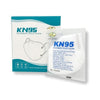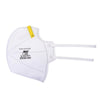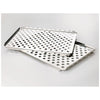- No products in the cart.
Lab Pro Cleanroom Wiper Selection Guide
Wiper Material
-
Polyester
Polyester wipes are 100% virgin, continuous-filament polyester in a double-knit, no-run interlock design with a laser cut, sealed edge. Recommended for use in cleanroom critical environments and a wide variety of applications including cleaning medical devices, electronics displays, instrument panels, semiconductors, and microelectronics products.
-
Poly-cellulose Blend
These general-purpose Spunlace non-woven wipes are constructed from a hydroentangled, non-woven blend of 55% cellulose and 45% polyester. This composite substrate has the highly absorbent properties of a natural fiber with the cleanliness and strength of a synthetic yarn. Recommended for use in cleanroom critical environments such as research labs, hospitals, and electronics manufacturers.
-
Cotton
Cotton woven wipers can be used on high-temperature surfaces that would likely melt synthetic or blended wipers. Formed from long staple cotton fiber, these wipers are strong and durable as well as very absorbent in aqueous solutions.
-
Nylon
Nylon wipes are made from 100% continuous filament knit synthetic nylon, which is a very strong and abrasion resistant. Constructed in a similar manner to polyester, the advantage of nylon is in its heat resistance and strength
-
Microfiber
Microfiber is a blend of polyester and knitted nylon. Microfiber increases the surface area, which provides superior wiping efficiency and absorptive performance. The silky texture of microfiber is designed for delicate/scratch sensitive surfaces.
-
Pre-Saturated
General purpose disposable Pre-sat wipes are packaged in a solvent safe container in which a predetermined amount of solvent has already been added. The perforated wipes are constructed of durable, lint-free, tear resistant polyester and offer the convenience and time savings of not having to pre-mix and measure chemicals for use with wipers. The operator simply opens the container and pulls out a wiper that is ready to be used. They are ideal for a variety of cleaning applications, including electronics, tools, workspaces, and other surfaces that require quick removal of contaminants.
Cleanroom Wipe Attributes

Cleanroom wipes are used to remove contamination in both general facilities management cleaning and critical environment cleaning. They are a frequently used item in the critical environment because they are used to clean all surfaces. Cleanroom wipes offer an extra level of protection for critical applications because they minimize particle generation. Important attributes of Cleanroom wipers include finishing, construction, absorbency, edge treatment, strength and durability, and packaging.
| Wiper Performance | |||||
|---|---|---|---|---|---|
| Polyester | Poly/Cellulose | Cotton | Nylon | Microfiber | |
| Cleanliness | +++++ | +++ | ++ | ++++ | ++++ |
| Durability | ++ | + | ++++ | ++++ | +++ |
| Water Absorption | - | ++++ | - | - | |
| Solvents Absorption | +++ | +++ | ++++ | +++ | +++ |
| Chemical Resistance | +++ | +++ | +++ | +++ | +++ |
| Heat Resistance | - | - | +++ | + | + |
| Cost | Med | Low | High | High | High |
| - Poor + Good ++ Better +++ Excellent ++++ Best | |||||
- Poor
+ Good
++ Better
+++ Excellent
++++ Best
Download a Free Copy of Our Wiper Selection Guide
Laboratory wipes are critical to both general and cleanroom facilities, but with so many options out there it can be difficult to decide which one is right for your facility and application. Download a copy of our handy lab wipe selection guide today!
DOWNLOAD MY COPYLab Pro Wipes Selection Chart
| PROPERTIES | APPLICATION | |||||||||||||
|---|---|---|---|---|---|---|---|---|---|---|---|---|---|---|
| Cleanroom | Material | Finishing | Construction | Absorbency | Strength | Electronics | ESD Sensitive |
LCD Cleaning |
Stencil Cleaning |
Lab | Optics | Industrial | Aviation | |
| LC-ISOWP18 LabClean 70% Isopropyl Alcohol (IPA) wipes | Class 1000-10000/ISO 6-7 |
Polyester | Non-woven | |||||||||||
| LC-CPWIPE LabClean Poly Cellulose Blend wipes | Class 1000-10000/ISO 6-7 |
Poly/ Cellulose | Cold knife cut edge | Non-woven | ||||||||||
| LC-PWIPE LabClean Polyester wipes | Class 1000-1000/ISO 5-6 |
Polyester | Laser cut | Knit | ||||||||||
| 6704 / 6709 Econowipes | Class 1000 M5/ISO 6 | Poly/ Cellulose | Non-woven | |||||||||||
| 6713 Econowipes | Controlled Environment | Poly/ Cellulose | Non-woven | |||||||||||
| 6209 Light-weight Poly-wipes | Class 100 M4 / ISO 5 | Polyester | Laundered | Knit | ||||||||||
| 6209HC/ 62096HC Light-weight Poly-wipes | Class 100 M4 / ISO 5 | Polyester | Laundered, Heat cut | Knit | ||||||||||
| 6259 Heavy-weight Poly-wipes | Class 100 M4 / ISO 5 | Polyester | Laundered | Knit | ||||||||||
| 6259HC Heavy-weight Poly-wipes | Class 100 M4 / ISO 5 | Polyester | Laundered, Heat cut | Knit | ||||||||||
| 6254BESD/ 6259BESD2 Poly-Onyx ESD Wipes | Class 100 M4 / ISO 5 | Polyester | Laundered | Knit | ||||||||||
| 7348LE Cleanroom Chamois | Class 100 M4 / ISO 5 | Poly / Nylon | Laundered, Laseredged | Knit | ||||||||||
| Best Acceptable Not applicable/Not recommended | ||||||||||||||
Best
Acceptable
Not applicable/Not recommended
Edge Treatment Options
The perimeter of the wiper is the primary contaminant source. For example, polyester wipers made from the same fabric can have drastically different levels of contamination based on the way its edges are cut and finished. The predominant wiper edge treatments are: cold knife cut, laser seal, and pressure heat seal.

Laser Seal
A laser cuts and seals edges using heat. This edge treatment is cleaner than the cold knife cut edge treatment because all the fiber ends are melted. The laser sealed edge is thicker than the substrate.

Cold Knife Cut
Cold knife cut edge are cut by a steel blade is used to cut the fabric. This method can leave certain amount of fibers on the wiper and can lead to particulate contamination as the wiper is used.

Pressure Heat Seal
Pressure heat seal is accomplished by using heat and pressure to form the border of the wiper. The edge is then ultrasonically sealed. This is the cleanest edge treatment.








































